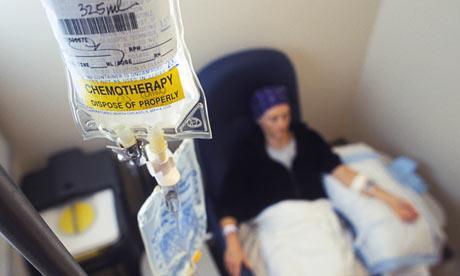 Studies done worldwide have shown that cancer treatment can, and will, come a long way from previous methods of full-body cell targeting in order to reduce risk on a grand scale. Testing and treatment, particularly for cancer in its early stages, and in younger patients, has become more a game of genetics and wait-and-see, due to new studies suggesting that the “less is more” treatment of cancer is more beneficial for the body as a whole, and can reduce the symptoms of damaging full-body treatments like chemotherapy.
Studies done worldwide have shown that cancer treatment can, and will, come a long way from previous methods of full-body cell targeting in order to reduce risk on a grand scale. Testing and treatment, particularly for cancer in its early stages, and in younger patients, has become more a game of genetics and wait-and-see, due to new studies suggesting that the “less is more” treatment of cancer is more beneficial for the body as a whole, and can reduce the symptoms of damaging full-body treatments like chemotherapy.
Namely the changes that have developed are due to a new genetic testing created through the Human Genome Project, which has developed tests that can determine the likelihood of a tumor occurring, or re-occurring, and allows doctors to develop treatment plans that work around the likelihood of relapse. This means that oftentimes patients in the early stages will merely receive targeted treatments, like a lumpectomy for early stage breast cancer; doctors will monitor the area without chemotherapy or radiation, allowing patients to avoid harmful side effects from a treatment that may prove unnecessary in low-risk patients.
Coupled with the genetic testing, a number of drugs that are more specifically targeted to block the pathways that cancer cells take to reproduce have been developed in the last few years, from companies like Ariad and Pfizer. These drugs can often take the place of more universally damaging cancer treatments like chemotherapy, have less dramatic side effects in many instances, and are more specifically targeted for different cancers — thus allowing cancer patients to have a less invasive, and more logical treatment for their condition.
While big changes are being made in the world of cancer treatment — most drastically in the mentality of doctors, moving toward a more holistic, “less is more” viewpoint — the standard treatment of cancer, particularly in lower budget hospitals, is still chemotherapy and radiation. These treatments have a number of side effects, the most universal being fatigue, hair loss, and nausea. Cancer patients continue to manage their symptoms with specialized diets and drugs for nausea and fatigue, bed rest and sleep to improve recovery times, regular monitoring by doctors, and wigs to cover baldness (this is particularly true for women, who feel that the baldness is an obvious indicator of their condition because of their gender). Until newer treatments become more universally tested and utilized, cancer patients carry on, with a strength unimaginable and unmatched.

